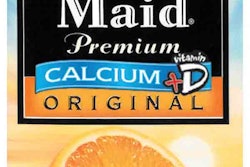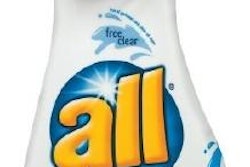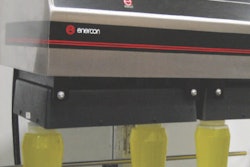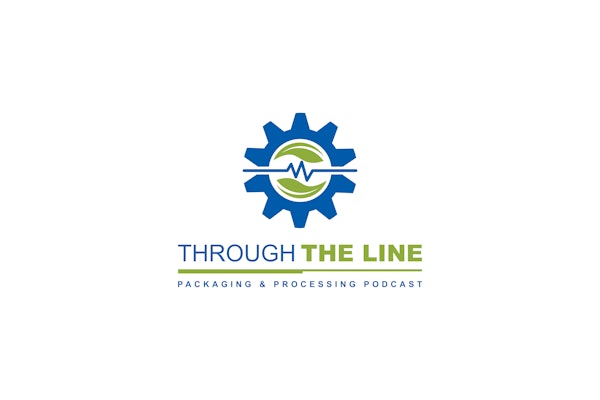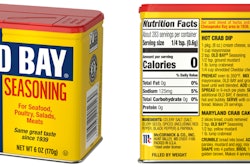Substances in packaging are not exempted from all obligations under REACH, although food ingredients are.
REACH—for Registration, Evaluation, and Authorization of Chemicals—is intended to identify and gather up-to-date-information about chemical substances that are used and marketed in the European Union. It’s a bigger deal than similar laws in the US and other countries, because it might result in chemical companies having to affirmatively demonstrate that certain chemicals will be “safe” for use, that is, safe for human health and the environment.
REACH applies to chemicals that are made in or imported into the EU at 1 tonne (a metric ton) or more per year, though there are a limited number of exemptions and special rules that might reduce the requirements for some chemicals, such as certain polymers (but not their monomers) and low-volume compounds.
Although REACH became effective June 1, the preliminary phase of pre-registration of chemicals that already are listed on the European inventory of chemicals (“EINECS”), or are manufactured there but not EINECS-listed, will not start for another year.
REACH’s biggest burdens will fall on producers and importers of chemicals of “very high concern” (carcinogens, reproductive toxicants, mutagens, etc.), also referred to as priority chemicals. The EU won’t even issue its list of those until at least 2009.
There are four types of activities under REACH: registration, evaluation, authorization, and restrictions.
Registration of new and old chemicals, with some exceptions, that are manufactured or imported into the EU in quantities of at least 1 metric ton. Required information and data depends on quantity of the chemical. Data sharing among registrants is possible. Chemical Safety Reports (CSR), risk assessment reports, are required for quantities above 10 tonnes. Existing chemicals must pre-register between June 1, 2008 and December 1, 2008, the benefit being that Registration dossiers are then due in three phases, 3, 6, and 11 years after June 1, 2007. New chemicals are subject to the Registration provisions beginning June 1, 2008.
Manufacturers/importers of food-contact materials must register substances. When a CSR is required, these manufacturers are exempt from conducting a risk assessment for the human health portion of the CSR.
Evaluation of registration dossiers, information on substances, animal testing proposals.
Authorization will eventually be required for substances of very high concern. Applicants must demonstrate that risks associated with use of substances are adequately controlled or that the socioeconomic benefits outweigh the risks and there are no suitable alternatives. Authorization is both user and product specific; granting of authorization depends on risk control and availability of lower risk substitutes.
Restrictions will be placed upon certain high-risk chemicals/uses where risks are inadequately managed. Producers and importers must conform to the restrictions or the substance is prohibited.
A key part of REACH is the authorization of the use of chemical substances it refers to as chemicals of “very high concern.” To begin with, all registrations will include a technical dossier, and if a chemical is a very high concern, a hazard assessment is required, including exposure scenarios for particular uses. Authorization, when required, could be an important obstacle. Washington, DC-based attorney Larry Culleen notes that, “Where an authorization is required, the substance cannot be placed on the market for use, or used, by a manufacturer, importer or downstream user until the authorization has been obtained.”
Interesting, maybe, but what does this mean to you? Well, if you are a manufacturer of food packaging materials and containers, (e.g. milk bottles, soda cans, etc.), or import them into the EU, your products are not specifically excluded from REACH and could be considered “articles” under REACH. So, says Culleen, “Although interpretations that are being worked through in the context of the implementing guidance will generally make clear that a container per se (such as a milk carton or soup can) is not subject to REACH’s requirements, a component chemical within the finished product might be subject to certain provisions of REACH.”
In particular, manufacturers or importers of articles must notify the regulatory Agency if the article contains a substance of very high concern (even if it won’t be released into the environment) and the substance is present at greater than 0.1% in the article and more than one tonne of the substance within such articles is produced or imported per producer or importer per year. Article producers and importers also must register a substance in an article if the substance is intended to be released during the normal conditions of use and the total amount released exceeds 1 tonne per year per producer or importer.
Culleen notes that, “because food packaging materials are not explicitly excluded from REACH, this nuance concerning substances in articles could be a concern not only for manufacturers of substances used in packaging materials but also could present an issue for downstream users of such articles even if they are not themselves the manufacturer of the articles.”
Culleen points out that even though substances used in food packaging are, of course, already regulated rather comprehensively by other EU directives and regulations, it’s not yet clear how the different legislation will interact. Thus, he says that both sets of requirements might end up applying to the materials: “It seems likely that if a substance is considered to be of ‘very high concern’ using the REACH classification scheme, the special legislation pertinent to food packaging materials almost certainly will apply and require limitations on use that may be in addition to any eventually imposed by REACH.”
And if the hazard a chemical presents is to the environment, REACH requirements are likely to apply because the food contact requirements generally do not address those issues at all.
If you think a substance in your product might end up being a substance of “very high concern,” eventually you will need to either present evidence defending its safety in your use, or stop using it.
Is REACH designed, at root, to stop the use of such chemicals altogether? Maybe, but regardless, it’s already having that effect. Culleen says, “REACH already is compelling manufacturers of products and their European customers and distributors to communicate more directly about product content. I think it is likely that there will be commercial ‘de-selection’ away from products that are shown to contain substances of very high concern, even if the substances have been used in that application for years and are not expected to be released from the product during use.”
So for now, if your products go to the EU or you do business there, it’s time to begin thinking about whether any of the chemicals you handle need to be registered, starting next year. And if you think your company makes a chemical that might end up listed as a chemical of “very high concern,” it’s not too early to start examining the available safety information.
Eric can be reached at [email protected], and visit his firm’s Web site at www.ericfgreenbergpc.com.



